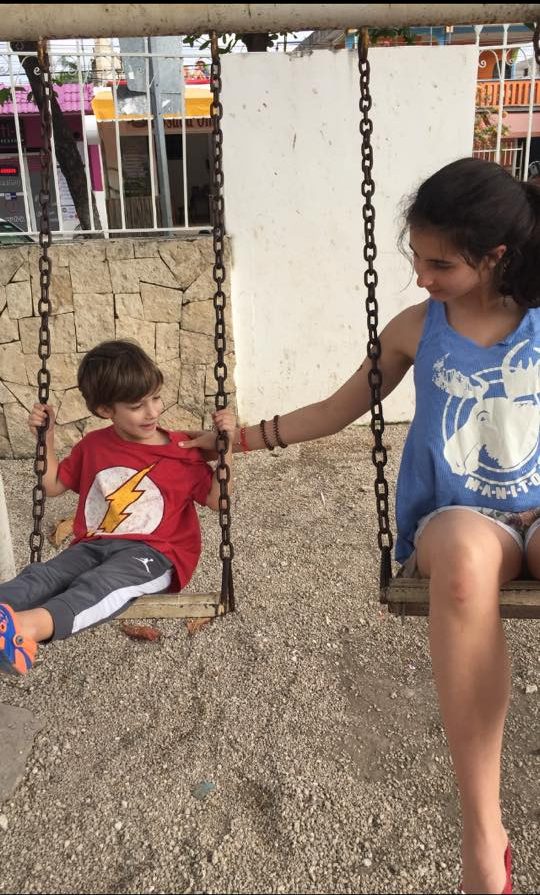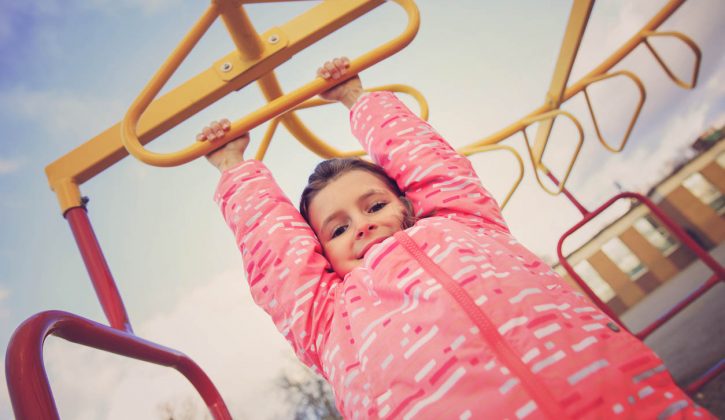Add another thing to the mother ‘worry list’. In an attempt to encourage children to be ‘riskier,’ and also get kids ten years and older back to playgrounds, a handful of playgrounds in Britain got rid of plastic playhouses and brought in crates, bricks and two-by-four plywood boards. Sound terrifying?
For most parents, including me, going to the playground is a pretty boring experience at best. At worst, it’s just a way to kill time and tire your child out. I’m not convinced that this trend of having fires, knives, saws, and different tools at playgrounds, as this story on the new trend of playgrounds suggests, is necessarily a good thing. In fact, I’m leaning towards this is a bad, bad move for everyone.
In the Princess Diana Playground in Kensington Gardens in London, which is visited by more than a million people in a year, a sign is posted which tells parents that risks in the playground have been ‘intentionally provided, so that you child can develop an appreciation of risks in a controlled play environment rather than taking similar risks in an uncontrolled and unregulated wider world.’
Every mother knows that taking your young kids to the playground is sort of fun for about 20 minutes, but mostly as dull as watching paint dry. But at least we know they are somewhat safe, even though our hearts may be pounding a little bit faster as we see them run around play structures.
CTV News picked up the story about ‘riskier’ playgrounds, writing, ‘Imagine a playground littered with looses bricks, lumber, hammers, nails, and saws and ringed by jagged boulders and thorny bushes.’ So why are some people intentionally advocating adding ‘elements of risk’ to playgrounds? ‘If you make a playground so safe that it’s boring, you’re going to lose kids,’ says Meghan Talarowski, director and founder of Philadelphia, PA-based Studio Ludo, a non-profit with a ‘mission to foster better play through research, design and advocacy.’
She advocates for ‘environments that have incremental risks that are a lot more fun and exciting for kids in that 8 to 10 and beyond range.’
When I read her quote, my heart skipped a beat and a number of issues, at least for this mother, arose in my head. In my opinion, there are number of ‘design flaws’ in her theory about riskier playgrounds. (Pun intended.) In fact, I actually wondered if this woman has children.
First, if you are trying to get older kids back to the playground with these riskier elements, then what happens to the younger kids, age 1 to 5 who want to play? I mean, I already worry as my kid hangs from the monkey bars, hoping he doesn’t fall and break his ankle. All this mother, or any mother, needs is another reason to worry that their day is going to end with a trip to the emergency room because their kid hit themselves in the head with a hammer, while also going down a slide, thanks to ‘riskier’ playgrounds. I’m not saying that kids don’t face risk, but in this day and age, risk is everywhere. Just read the news.
Around my neighbourhood, there are three playgrounds. Are they boring? Hell, yes! But they are boring for parents, not the young children. How many of us mothers have BEGGED our children to leave the playground already? Guilty!
Second, I’m already afraid of my 5 year-old bouncing on a coiled hippopotamus, so um, yeah, let’s just add a saw into the equation. That seems really smart! Sure, let my 5 year-old not only get a splinter from playing with plywood, let him hit another kid in the head with plywood. And, sure, let another older kid playing with bricks just, you know, throw it to land on my kids feet (or my feet) or worse, to his head.
Even if I can get over the fact that, yes, playgrounds are boring and some other elements of fun should perhaps be added, and, in a perfect world, there won’t be any emergency dental trips after a innocent trip to the playground, I still don’t think 10 year-olds (and beyond) are going to be goaded into heading to playgrounds because you’re offering them knives. I mean, sure, maybe they’d like to play with saws and fire, but this mother doesn’t want kids 10 years-old and ‘beyond’ sharing a playground with my young one.

Yeah, this mother rather not end up in the emergency room as a result of the trend of ‘riskier’ playgrounds. Thanks!
Sorry, in this day and age, I think it’s already too late to get older kids back to the playground in the way Talarowski hopes. Not to make sweeping generalizations, but do researchers know what young boys are like? Give them a saw and they’re not going to create something out of the plywood. They’ll be chasing each other around, and us mothers will have to scream at our children to, ‘Stop that!’ and, ‘Be careful!’ a million more times more than we already do at a playground.
Maybe it’s different in Britain, and yes, it would be nice to get the kids outdoors more and off their devices, but, I’ll be brutally honest. In the one amazing playground near my house, which my five year old never wants to leave, and where people host birthday parties on weekends, children ‘beyond’ the age of 10, gather at night to hang out with friends, smoke pot, and have make out sessions. Because it is a neighbourhood playground, and there’s not much else to do in my area, that’s where the kids gather at night. And because they drink, adding thorny bushes and loose bricks seems like a fabulous idea! (One that will for sure end in someone in emergency!)
Then, of course we live in litigious age, so in places like the United States, many parents would obviously be opposed to this trend of ‘riskier playgrounds.’ I can completely understand. Who wants to get sued because your kid threw a hammer at another kid, who would now need many dental operations?
Talarowski argues that since Canadians have universal health care, we should be excited to let our kids experiment with risks, in ‘purposefully-designed playgrounds that features elements like natural rocks and wooden climbing areas.’ Um, sure, we may not have to pay for our emergency room visits, but that doesn’t mean we actually want our kid to end up in emergency with a broken leg that can take weeks to heal, or that we want to cry while watching our children get stitches, because someone threw a rock in their face, all so they can learn that life is risky.
And, oh, the guilt I would feel if my kid accidentally pushed another kid off a risky climbing area. Likewise, I would be pissed if another kid tried to saw my kid in half, because they think it was fun…and risky!
While Talarowski argues that playgrounds are ‘too safe,’ and that kids should know that life is not safe and has risks, I argue, let’s leave the playgrounds alone. If you want your children to take risks, there are many other ways to accomplish that. Like taking a hike, or having them volunteer in an underserved area, or just even taking them for a long walk in downtown Toronto. I say, let the young ones be safe and have their own playground. I would rather be bored than end up spending my night in emergency.
What do you think? Would you like riskier playgrounds?
Tagged under: hospitals,parenting trends,Children's Hospitals,risk taking,children growing up,watching children,letting kids take risks,new trend,risks,play structure,risky behaviour,learning while playing,why risk it,exploring outdoors,trendspotter,outdoor play,outdoor playgrounds,kids playgrounds
Category: mom-101






